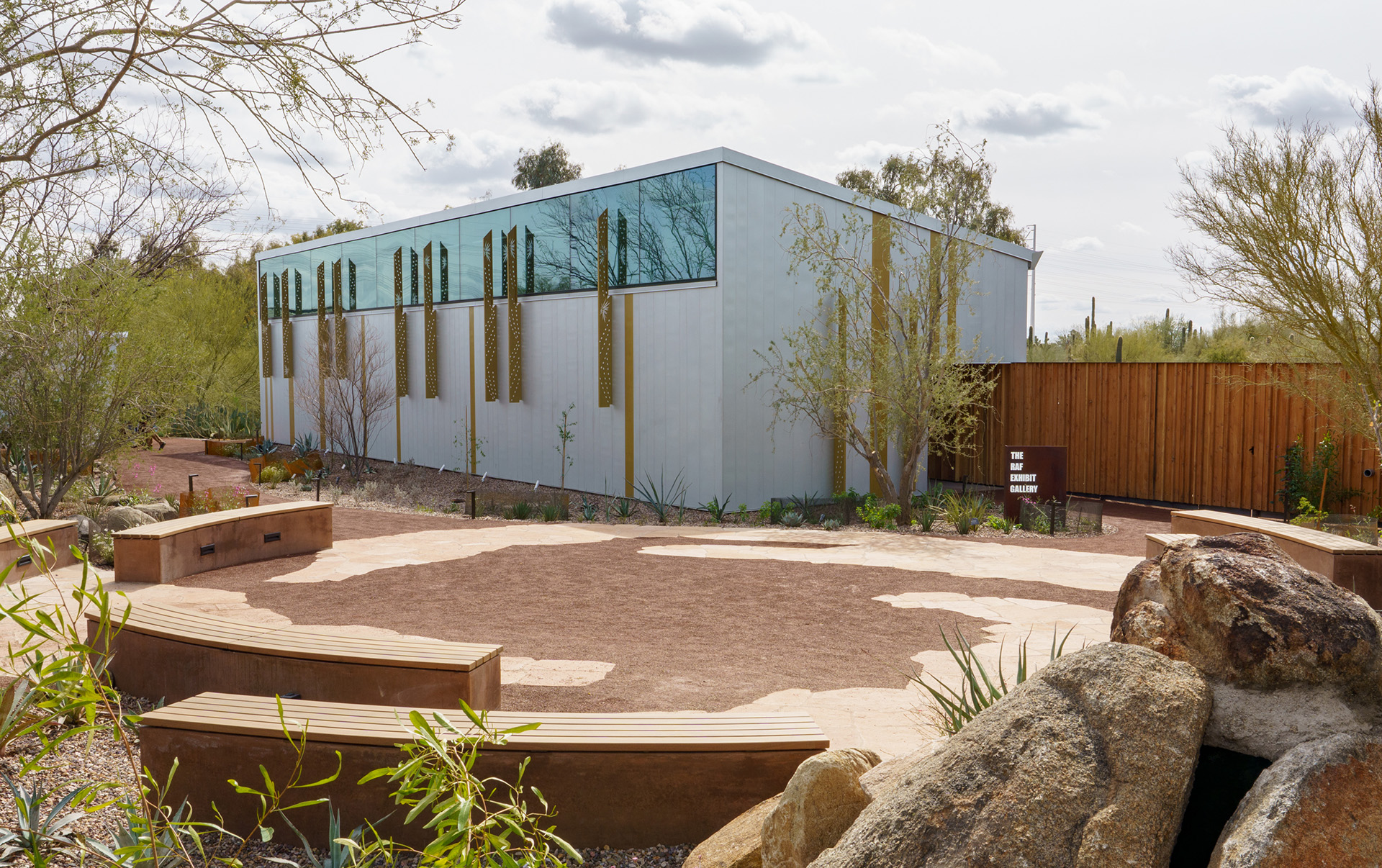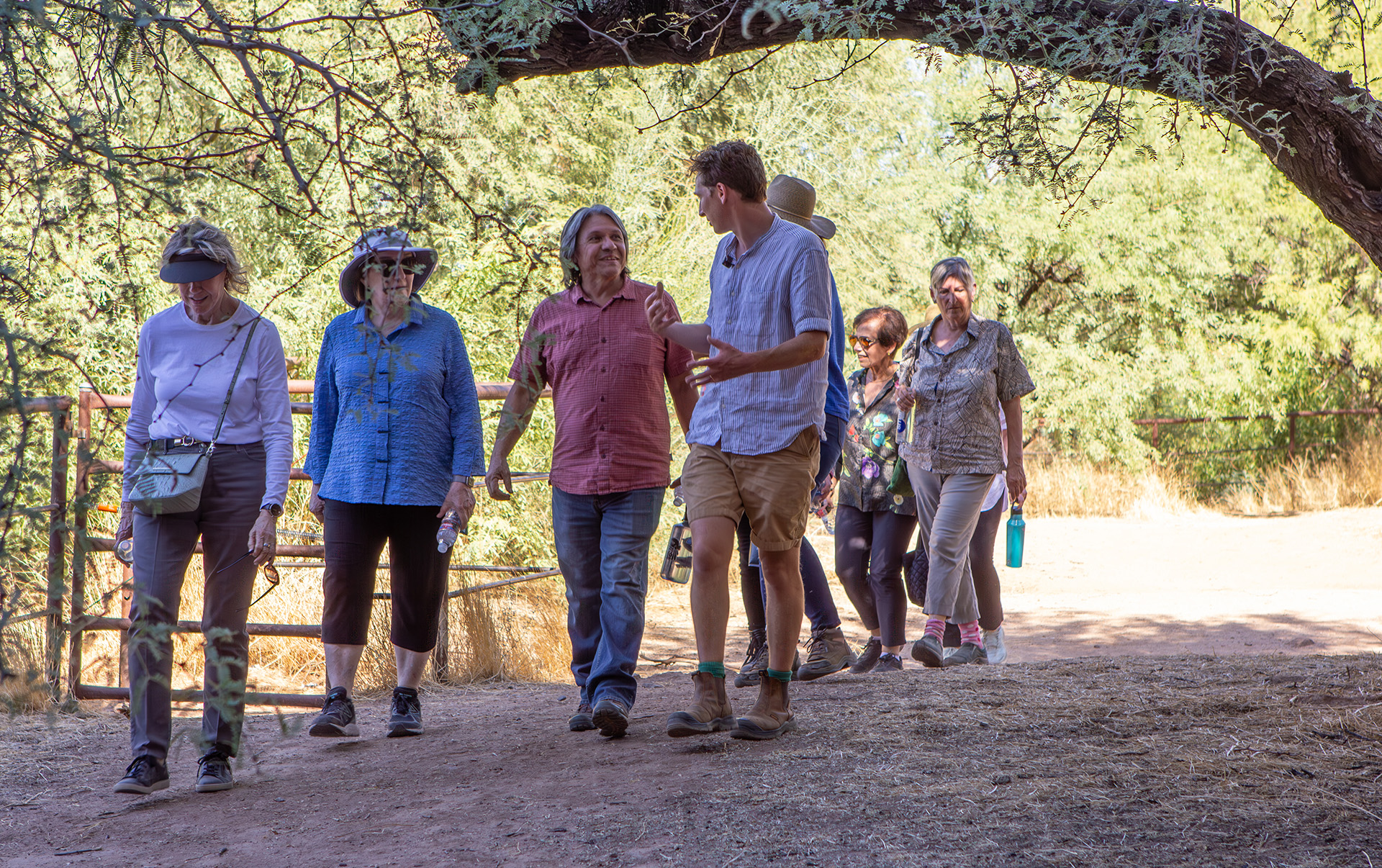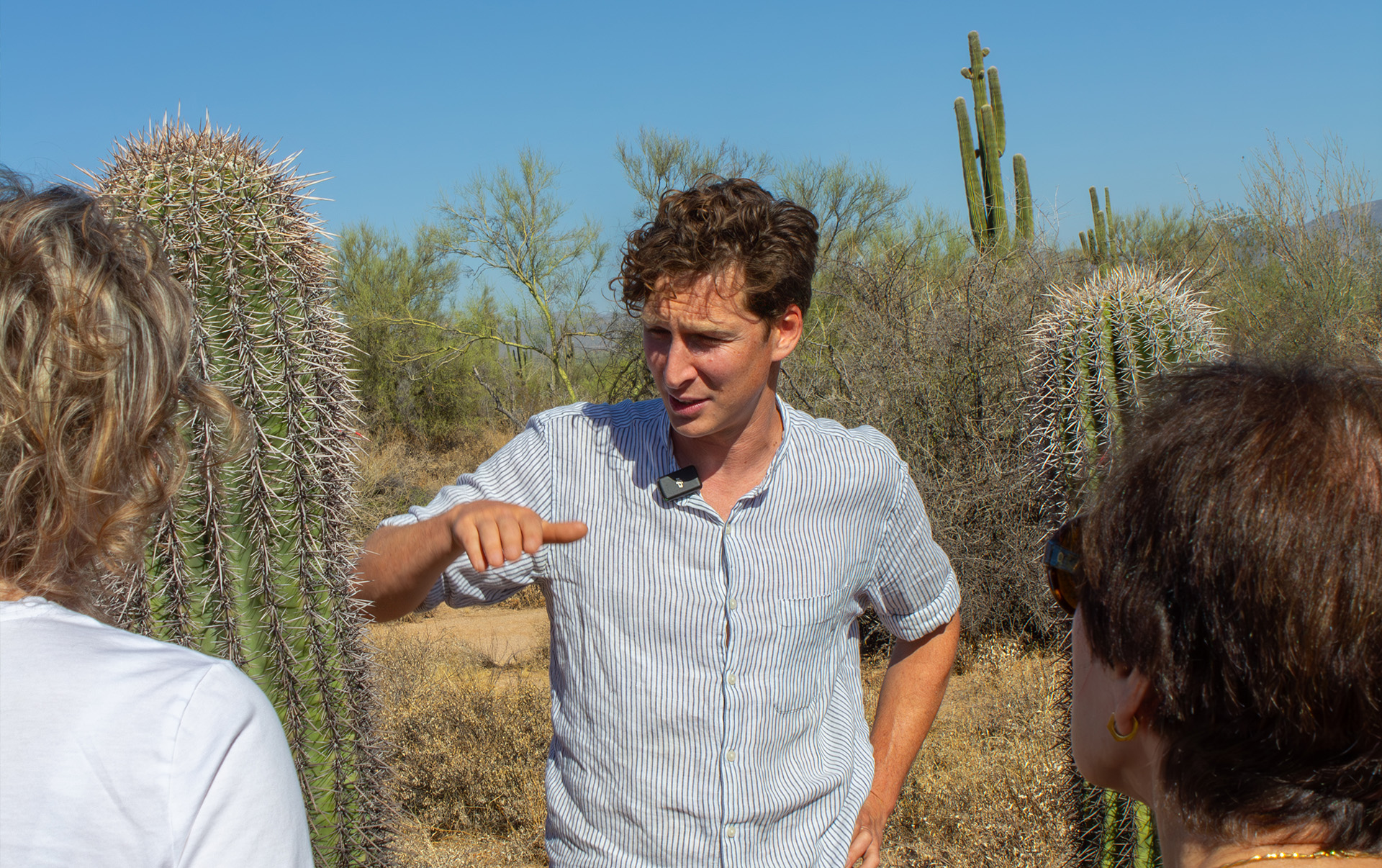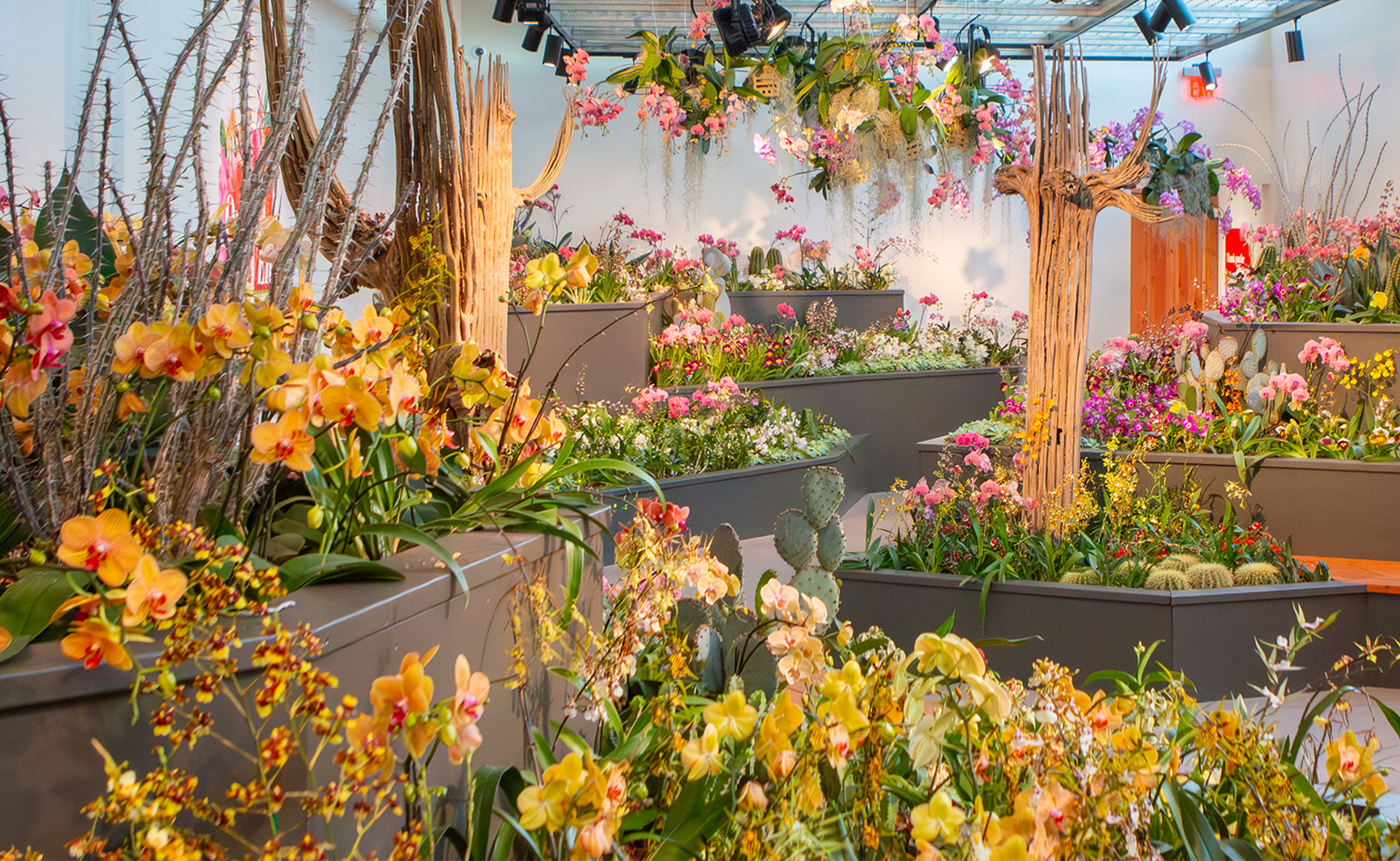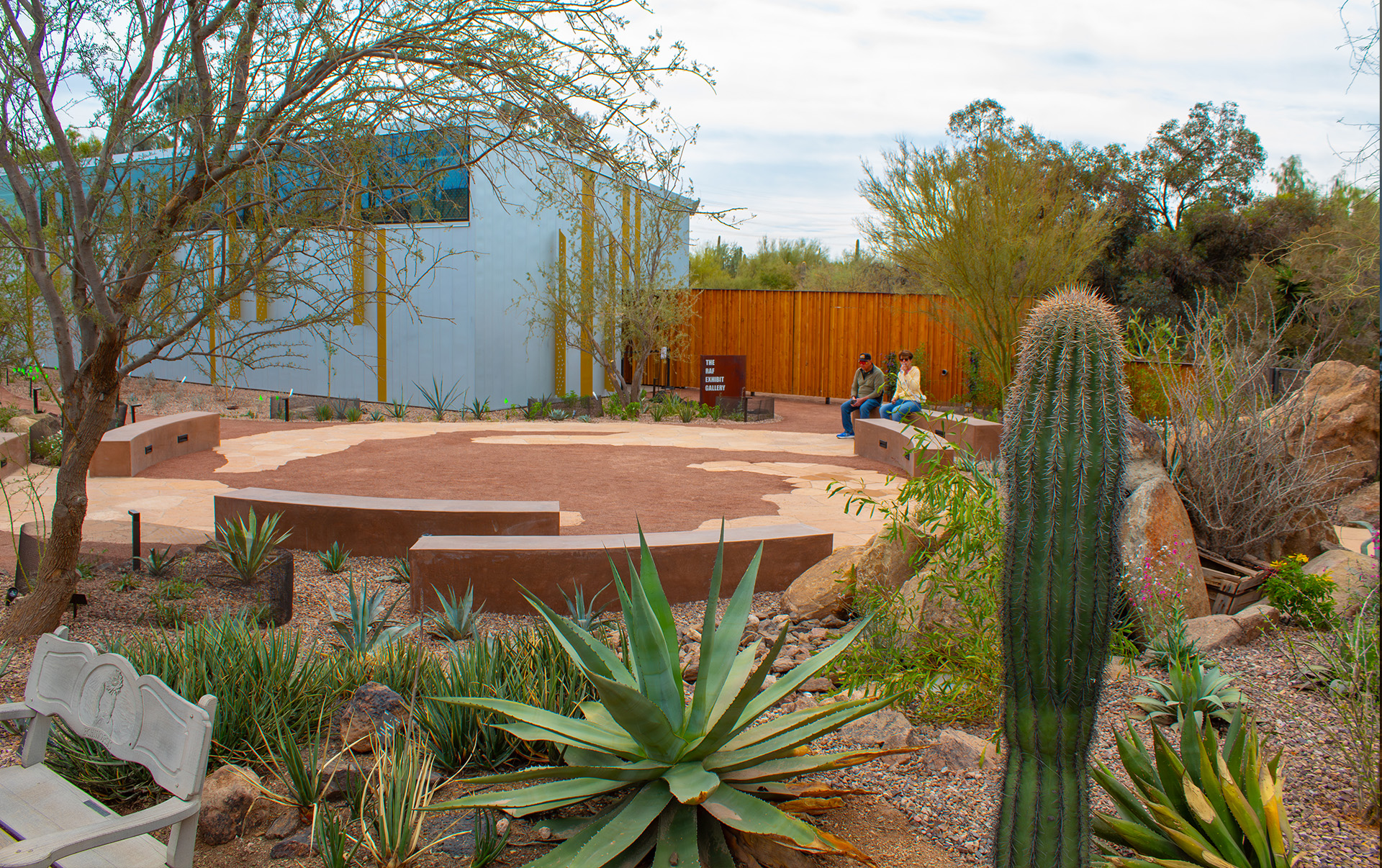By Elaine McGinn, Chief Experience Officer
I still remember walking into The RAF Exhibit Gallery for the first time during the Orchid Fever exhibition. Outside, Desert Botanical Garden buzzed with visitors, filling the trails, admiring cactus blooms and standing in awe of the majestic saguaros. But stepping inside the gallery felt like entering another world entirely.
I was immersed in a dreamlike space where colorful tropical orchids floated midair, gently swaying, lit from within, interspersed among arid succulents. It was an experience that told a story of art, science and conservation, capturing the fragile fight to save the tiniest of desert orchids: the Canelo Hills Ladies’ Tresses (Spiranthes delitescens).
This is everything The RAF Exhibit Gallery was created to be.
A Space to Slow Down and See Differently
Tucked into a quiet corner of the Garden, The RAF Exhibit Gallery is a climate-controlled, adaptive space designed to help visitors slow down, look closer and connect with the desert in new ways. Through immersive multimedia exhibitions, the gallery brings our mission to life, blending creativity, scientific discovery and the beauty of the natural world.
The vision for the gallery began more than a decade ago as part of the Hazel Hare Center for Plant Science. Located adjacent to the Garden’s horticultural and conservation facilities, the gallery was developed with three simple but ambitious goals:
-
- Showcase innovative exhibitions that offer fresh perspectives on the desert environment.
- Bridge art and science with interdisciplinary displays that spark thought and curiosity.
- Create a space for interaction, with programs and experiences that invite dialogue around sustainability and conservation.
This fall, the gallery will take center stage with the debut of FRAMERATE: Desert Pulse—a groundbreaking art-science collaboration by UK-based artists, ScanLAB Projects.
Desert Pulse: A Living Portrait of the Sonoran Desert
Opening Oct. 11, Desert Pulse invites visitors into a world where art, technology and ecology converge. The exhibition spans four large outdoor installations and culminates in a temporal, engaging experience inside The RAF Exhibit Gallery.
Inside, guests will encounter multi-channel digital projections of 3D LiDAR scans captured daily across the Sonoran Desert over the past year. You’ll witness saguaros blooming, fire scars healing and the Salt River rising and falling with monsoon rains. These projections shift through time and space, layered with sound, environmental data and real-time spatial mapping.
This isn’t just storytelling, it’s desert ecology in motion.
Beyond its artistic voice, the exhibit carries real scientific value. Data gathered from the LiDAR scans will support Garden researchers studying phenological changes and long-term ecosystem dynamics.
Collaboration at the Core
The RAF Exhibit Gallery is more than a venue, it’s a hub for interdisciplinary collaboration.
For Desert Pulse, ScanLAB Projects worked closely with the Garden’s Dr. Kim McCue and Raul Puente to identify key phenological milestones and scan locations. International partners from Ottershaw Cactus Nursery in the UK also contributed insights into wild versus cultivated cactus bloom cycles.
To deepen the experience, the gallery will host a range of programs throughout the exhibit’s run, like artist talks, scientist panels and hands-on workshops that explore the intersections of climate, conservation and creativity.
The RAF Exhibit Gallery reflects the Garden’s commitment to innovation, education and audience engagement. As we face the challenges of climate change, urbanization and habitat loss, this space offers a new way to connect people to nature through story, experience and shared wonder.
Whether you’re a nature enthusiast, art lover or tech geek, this is an experience you won’t want to miss. Step inside and see the desert in a whole new light. In Desert Pulse, the Sonoran Desert is not just seen, it’s felt.
